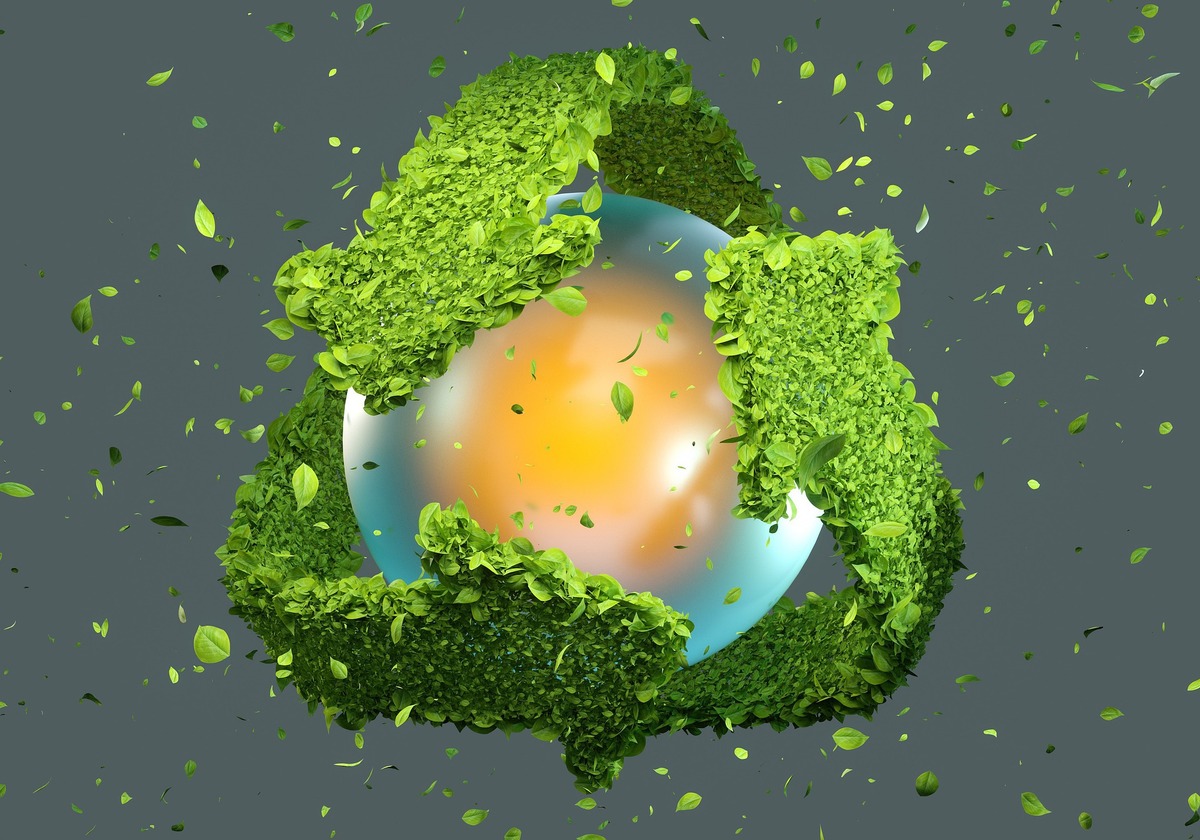You are viewing 1 of your 3 free articles for this month.
Get the knowledge: How does recycling work?
A significant transformation lies ahead as society tries to minimise depletion of the earth’s resources and tackle the huge volumes of waste generated each year. Recycling represents one answer to these challenges, but it’s not a silver bullet solution.

The global waste crisis represents a major threat to the environment. The World Bank has warned that worldwide waste levels will increase up to 70% on 2016 levels by 2050 if urgent action isn’t taken, bringing us up to 3.4 billion tonnes of rubbish produced every single year.
The consequences of this are significant as waste makes a substantial contribution to climate change. This waste needs to go somewhere, but traditional disposal routes such as landfill and incineration pose major environmental challenges in terms of greenhouse gas (GHG) emissions, with waste disposal responsible for 3.2% of all global GHGs – more than deforestation (2.2%) or aviation (1.9%).
Meanwhile, this huge mountain of rubbish represents an enormous volume of wasted resources in terms of the energy, materials and water – all of which are responsible for further GHGs – needed to create it in the first place. According Circular Economy, we’re now extracting and processing more than 100 billion tonnes of materials every year, with 70% of GHGs tied to material handling and use. Reducing the amount of waste we produce is therefore critical, as is ensuring the waste we do create is recycled properly, so that it has as little negative environmental impact as possible.
How does recycling work?
Recycling is a fairly simple concept, where waste materials are used to make new products, such as turning glass bottles into new glass bottles. The recycling process will depend on the material in question. Paper, for example, will be turned into pulp, de-inked and then flattened, while glass will be crushed and then melted. Recycling takes place at recycling plants, called MRFs (material recovery facilities).
Global recycling targets
The critical role proper waste management will play in the climate fight means many countries around the world have set their own recycling targets. The EU is aiming to recycle 65% of all municipal waste by 2025, rising to 70% by 2030. The US has set a recycling target of 50% by 2030, while England has set a target of recycling 65% of municipal waste by 2035. Australia has set itself an ambitious target to recycle or reuse 80% of the waste being produced in the country by 2030.
Others countries, meanwhile, are relying on industry to mitigate the challenges of waste. India was the first Asian country to launch a Plastics Pact, designed to build a circular system for plastics, which stipulates that by 2030 50% of plastic packaging must be recycled. However, the bulk of this responsibility will fall to producers, with laws obliging all producers of plastic to collect and recycle at least 50% of their rigid plastic packaging, and 30% of their flexible plastic packaging by 2024.
Many industries and businesses have set their own recycling targets. Members of the Can Manufacturers Institute in the US, for example, have committed to a 70% aluminium can recycling rate by 2030, while PepsiCo has announced that it is aiming to use 100% recycled or renewable plastic in all of its crisp packets by 2030. Elsewhere, more than 1,250 companies around the world have made a pledge to Circulytics, which supports the transition towards the circular economy. Read more about the circular economy here.
The impact of recycling
|
The issue of global comparison
However, making like-for-like recycling comparisons between countries is a challenge. For the most part, waste collection rates vary by levels of income. According to digital waste platform AMCS, high-income countries only make up 16% of the world’s population, yet they generate 34% of the world’s waste. In high-earning regions such as Europe, North America and Central Asia, at least 90% of waste is collected for recycling. In low-earning countries, that figure drops to 48%.
Additionally, every country has its own definition of what constitutes ‘waste’. Sweden will claim it recycles nearly all of its waste, but also counts energy recovery from waste incineration as recycling. Wales, meanwhile, reports a high 65.2% recycling rate, but this includes rubble, so the real figure is likely to be much lower.
Palming off the problem
The global challenge of recycling is further exacerbated as developed countries often rely on shipping their recyclable waste overseas for processing. This is in part to help reduce costs, and also to mitigate the lack of recycling infrastructure in their own nations (more on that below).
While this waste is ostensibly sent overseas to be recycled, numerous investigations from the likes of Greenpeace, The Guardian and the BBC have found that in many cases, this waste is not recycled properly, if at all, therefore resulting in misleading recycling figures. In 2019, for example, The Guardian found that the equivalent of 68,000 shipping containers full of plastic waste were exported from the US to developing countries that mismanage more than 70% of their own plastic waste. Poor regulation in developing countries means that the recycling process is often dirty and labour-intensive, with serious consequences for public health and the environment.
In recent times, however, developing countries have pushed back on this practice. Until January 2018 China imported most of the world’s plastic, but because of concerns around contamination and pollution announced it would no longer purchase plastic waste that was not 99.5% pure. As a result, the amount of the UK’s plastic taken by China fell 94%. Malaysia has also sent back thousands of tonnes of non-recyclable waste to countries including the US, UK, Canada and Australia, after the country’s environment minister Yeo Bee Yin said that it will not be "a dumping ground to the world".
Without the option of shipping waste overseas, many developed countries are turning to environmentally-damaging processes, such as incineration to dispose of their rubbish.

Are recycling rates improving?
Recycling rates have jumped over the past few decades as environmental concerns take a global stage, but momentum is quickly being lost. Some countries, like England, have missed key recycling targets, while others such as global leaders South Korea, Slovenia and Germany, are seeing plateaus following otherwise initial bursts of success from new initiatives.
While many countries continue to see some progress, improvements aren’t happening fast enough to mitigate the consequences of our growing waste mountain, which is being driven by rapid urbanisation and a growing population. Hence the World Bank’s warning that worldwide waste levels will increase up to 70% on 2016 levels by 2050 if urgent action isn’t taken.
Barriers to recycling
There is no one-size-fits-all solution to improving global recycling rates because every country, region and industry faces its own barriers to waste management. However, some commonly-cited challenges include:
A lack of recycling infrastructure
MRFs are not always equipped to deal with certain materials, so materials that technically can be recycled sometimes end up in landfill or incineration. Similarly, in more rural areas the cost involved in transporting waste to an MRF outweighs the benefits of recycling it, so it is disposed of in other ways. According to The Grocer, an increasing number of retailers, however, are introducing their own in-store recycling points to help mitigate these challenges.
Inadequate or complicated service provision
In many countries, municipal recycling is the responsibility of local authorities, so recycling services can vary wildly even between nearby towns. Information on local services isn’t always communicated clearly. Research from the World Economic Forum indicates that 24% of people surveyed in Western Europe say they don’t trust their municipal recycling schemes.
Consumer confusion
There is a lack of clarity among consumers over exactly what can be recycled. This is due to differences in local service provision, as well as confusion over labelling. While there are industry drives around the world to better provide on-pack guidance to consumers regarding the disposal of packaging, recent research by Consumers International has found that only 19% of assessed labels give consumers quality information to make informed recycling and purchasing decisions. Another report from One Planet Network, says that two thirds of consumers cite ‘uncertainty’ as the main reason for not always recycling.
Consumers don’t see the point
Despite the vast quantities of research demonstrating the importance of recycling, consumers don’t always believe it yields any benefit. A recent study by packaging firm DS Smith in the UK found that more than a third of those surveyed believe their recycling efforts have a negligible impact on the environment.
The future of recycling
There are still reasons to be optimistic about the future of recycling, especially where technology and innovation are concerned. From advanced artificial intelligence in MRFs and smart recycling programmes levered by the Internet of Things (IoT), to the use of plastic-eating microbes and innovative new packaging materials, important work is tackling our growing waste problem and reducing its burden on the climate now and in the future.
This article was first published 29/06/22 but has been updated to reflect the latest research and developments in this area.
Further reading
The World Bank report warning on global waste levels.
Our World in Data shows that 3.2% of all global GHGs comes from waste.
Circular Economy's report on global material consumption and GHGs.
- EU Waste Framework Directive sets the basic concepts and definitions related to waste management, including definitions of waste, recycling and recovery.
The US has set a recycling target of 50% by 2030.
England has set a target of recycling 65% of municipal waste by 2035.
Australia's national waste policy.
The India Plastics Pact (IPP) collaboration between WWF India and the Confederation of Indian Industry (CII) is building a circular system for plastics.
India's laws on plastics collection and recycling.
- England's missed recycling targets,
Business initiatives include the Can Manufacturers Institute in the US. PepsiCo's target to use 100% recycled or renewable plastic in all its crisp packets by 2030. And 1,250 companies have made the Circulytics pledge, which supports the transition towards the circular economy.
AMCS waste data.
Blue Ocean Strategy data on Swedish recycling rates and waste.
More on Wales' recycling rates.
Greenpeace, The Guardian and the BBC investigations on actual recycling rates and waste exports, including to Malaysia.
WRAP report on environmentally-damaging waste disposal processes.
- The Grocer report on the limits of in-store recycling and what each retailer is doing about it.
- Research from the World Economic Forum shows a quarter of people surveyed in Western Europe say they don’t trust their municipal recycling schemes.
- Consumers International research on consumer understanding of recycling labelling.
- One Planet Network report on consumer confidence in recycling.
- DS Smith research shows GenZ lack confidence in recycling.
- Solutions include artificial intelligence, the Internet of Things, the use of plastic-eating microbes and innovative new packaging materials.
Activate employees
Find out how OckiPro membership engages employees to deliver sustainability impact.
Get Involved
There are many ways to get involved with Ocki and its community. To find out more, click the button below




